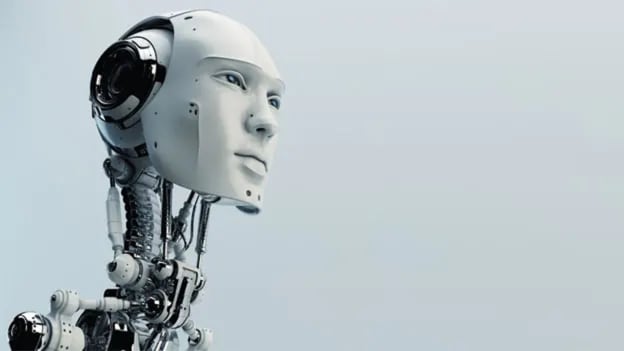Must-have HR technologies that shall drive the future of HR

As companies jump onto the digitalization bandwagon, the HR technology market is further booming. New categories are emerging as organizations strive to curate a contemporary talent architecture and talent experience. As the “Core HR System” is being replaced with the idea of a “Core HR Platform”, the consumerization of workplace-applications is becoming real. HR-tech service providers are coming up with tools that help understand, diagnose, design, and improve the way work gets done. The growth of the HR tech market is multi-fold, driven by the increased demand for post-implementation support and maintenance, increased adoption of cloud across industries, and a strong focus on developing software/solutions that easily integrate with mobile apps. All this is a quest towards “Making Work Better”.
The “support & maintenance services” segment alone is estimated to expand at a CAGR of over 14 percent from 2019 to 2025.
The fact is that in today’s digital era, HR technology adoption is no longer a choice, but a necessity. The sooner an organization adopts HR technology, the sooner it will benefit the workforce and organizational effectiveness and performance.
Listicle of HR technologies and application in various HR arenas
HR technologies are now focusing on redesigning work from process to experience. On one end we have usership and ownership at the employee-end, creating a great employee experience (day-to-day work activities), and talent experience (career and growth). On the other hand we have HR and IT people using talent management practices and processes, core HR, payroll and IT applications. The following emerging technologies are driving both ends of the spectrum:
-
Artificial Intelligence(AI) and Human Intelligence co-perform: AI and humans shall complement each other, with machines taking over mundane tasks, and leaving more cognitive tasks to human-workers. AI will see application in talent acquisition for candidate screening and candidate relationship management. Chatbots will help streamline employee queries and increase engagement. AI-based learning recommendations will help customize learning for a better learner-experience and job performance. AI tools will also suggest career paths and will help employees take their career planning in their own hands. Contrary to popular belief that AI will lead to job losses, it will allow human workers to be more focussed and strategic.
-
Virtual Reality and Augmented Reality create an “engrossing experience”: Real-world employment experiences can help job-seekers make informed career choices and also help millennial employees seek the desired digital experiences. Thus, recruitment and training and development must benefit with AR and VR application. Leadership development is another area where organizations can create simulations of real-life situations for high-potentials to navigate and succeed in reel and real life.
-
Cloud HRIS: As the gig workforce becomes increasingly mainstream, companies must institutionalize technologies that align with the Future of Work- i.e. remote and full-time office employees co-working and co-performing. Cloud-based HRIS solutions are still in the infancy phase. These are necessary to ensure innovation, cost reduction, speed of updates, less downtime, increased flexibility, and to avoid the hassle of constant system upgrades****.
-
Mobile-first: The popularity of mobile apps with the millennial generation is forcing employers to go mobile-first. Whether it is receiving job applications or addressing employee queries, anytime-anywhere mobile-app is the way to go. L&D must design learning-content for mobile consumption, alongside desktop-heavy LMS. For example, mobile games (gamified learning) as a learning intervention has great scope for employee engagement. Recruitment-marketing also should be mobile-savvy, for next-gen employees to have access to company information and make an informed career decision. Similarly, continuous performance management demands an anytime-anywhere feedback module which allows managers to provide instantaneous feedback on-the-go.
-
Data and Analytics: Talent analytics has been top talk, but the lack of data-skills in HR holds back organizations from utilizing it for high performance. Data and analytics has potential to drive the employee experience. Organizations have formal and informal data related to employee demographics, behaviours, motivators, etc. Sentiment analytics can help understand what truly drives diverse employee groups and distinct individuals, allowing HR to create hyper-personalized talent-offerings that truly engage. Similarly, recruitment data can help carry out a holistic assessment for the “right fit”. Data and analytics finds immense scope for all HR arenas- workforce and policy design, rewards administration, performance management, learning and development, recruitment, employee engagement and retention.
Technological proliferation in big data analytics, machine learning, Artificial Intelligence (AI), and Internet of Things (IoT) is expected to positively impact the growth of the human resource management (HRM) market, which is anticipated to grow by a CAGR of 11 percent (2019-2025) and reach USD 30.01 billion by 2025.
How to enable technology adoption and entrenchment?
These emerging technologies are not new. However, the dearth of skills to interpret information generated by new technologies, and the stubborn lack of functionality in some talent management platforms has prevented them from adding true value.
32 percent of HR tech projects are significantly over budget, 53 percent meet implementation deadlines, and 42 percent are rated “not fully successful” or “failed” after two years.
As first-hand curators of the employee experience, HR must institutionalize the right technologies by first building their own tech-expertise. Developing data-skills is the first step to ensure a data-driven approach to people's decisions. Right selection, design and implementation of software are top priorities of HR leaders. The latest in the lot are modern-day vendors selling Employee-Experience platforms designed just to sit on top of the tech stack, to make employees’ lives easier. Even with the right skills, HR technology adoption may fail, if employees are not educated about the change. The CXO suite plays a major role here, by inspiring and enthusing employees to embrace technology. HR leaders must be able to influence top leaders and build digital-leaders, who act as role-models of tech-usage. This must be complemented with continuous investment in employees i.e. training employees and supervisors on how to use and leverage technology to perform well.













